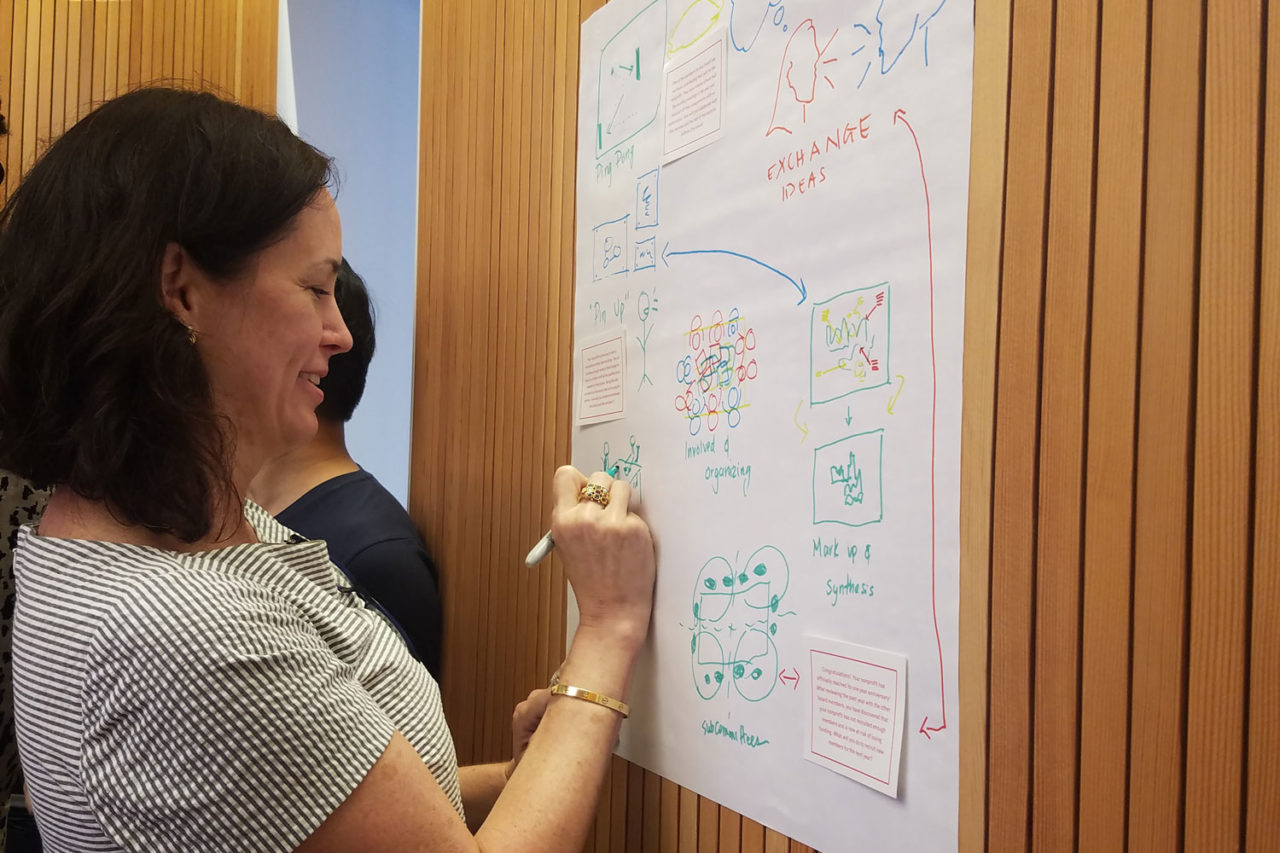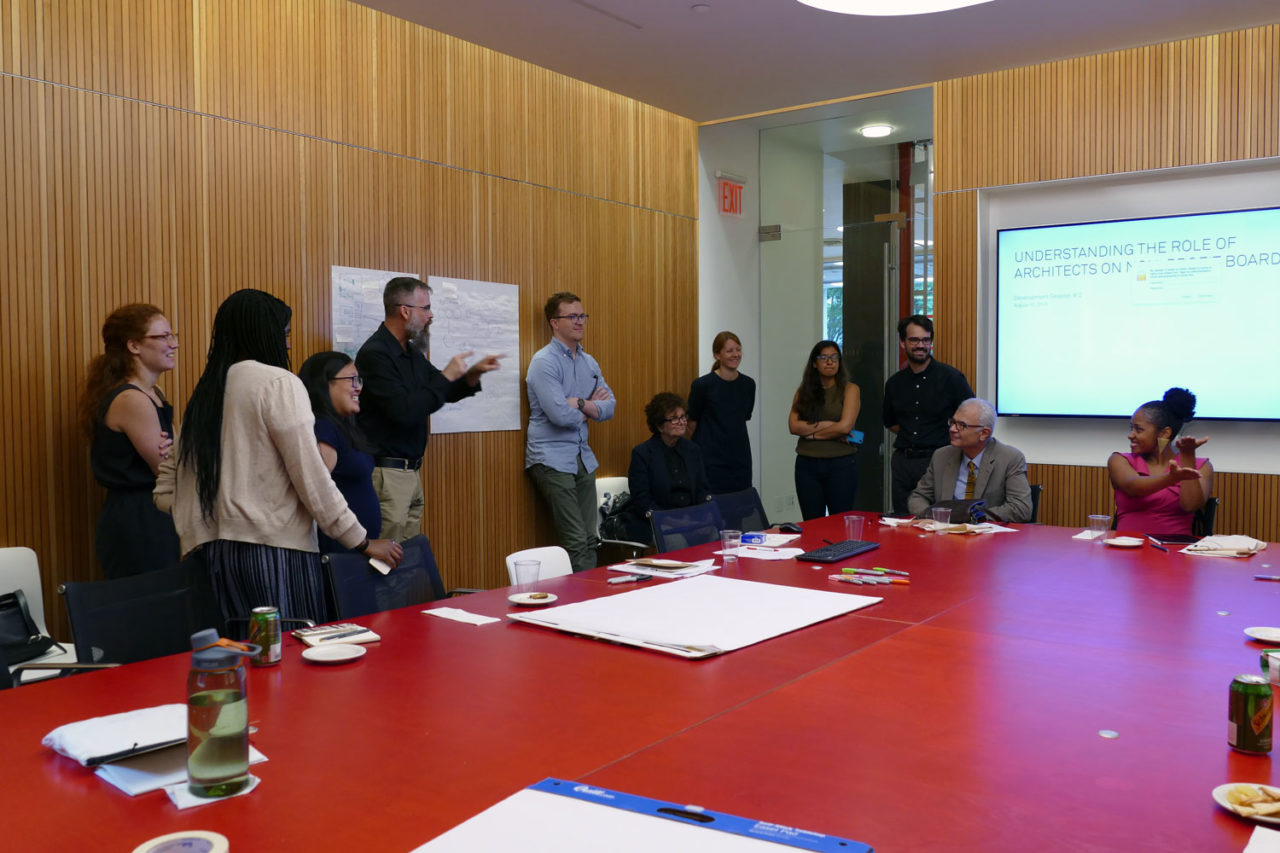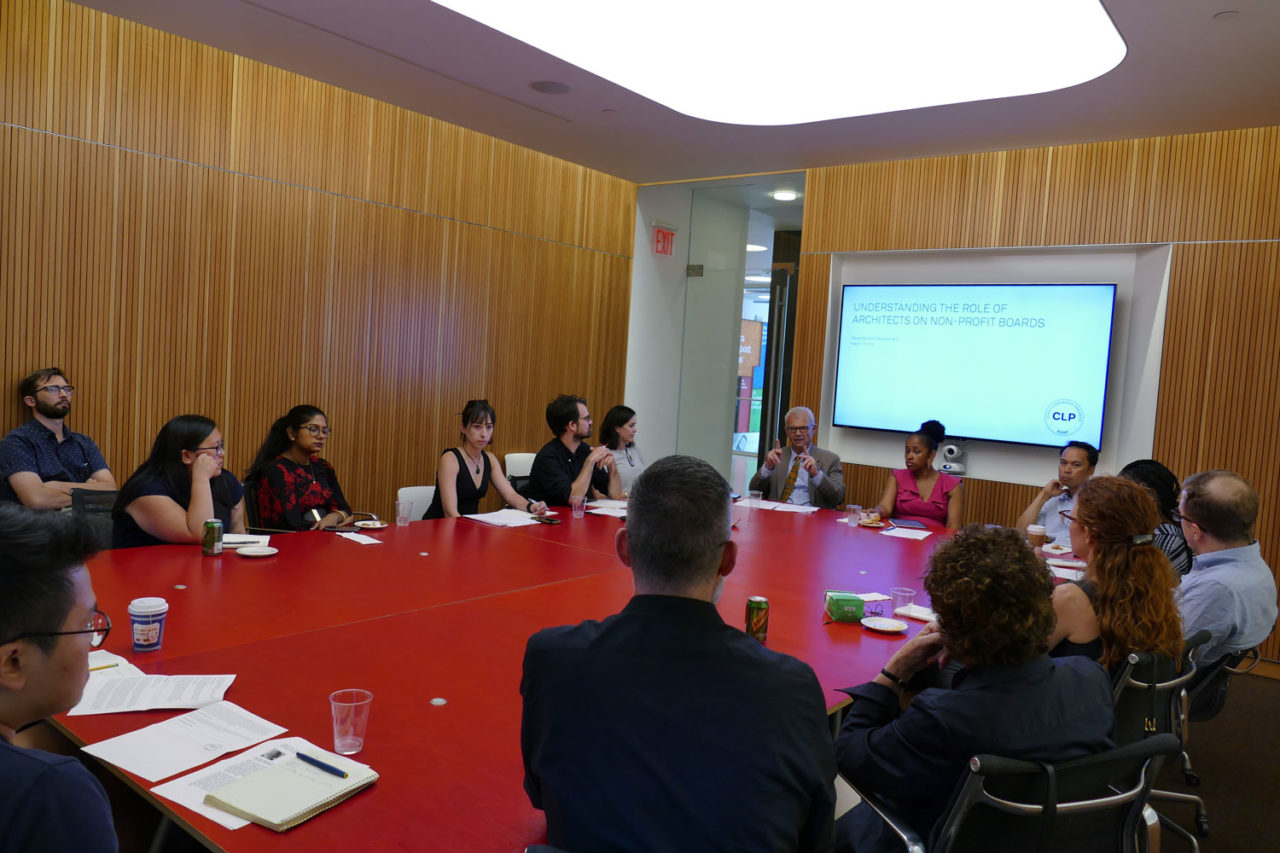by: Jade Ragoschke and Michael Haggerty
There is a broad continuum of opportunities for civically-minded architects to advocate for the public interest, ranging from running for public office to pro bono architectural services. The 2018 Civic Leadership Program‘s second development session focused on public service in the form of joining a non-profit or community board. The session focused on three main topics: the role of community and non-profit boards as an opportunity for civic engagement; the role of the architect and how their skills and expertise may apply to the issues faced by these organizations; and, developing strategies to better act as advisors and advocates to board members on a range of civic topics.
The first part of the session started with round-table skill building discussion with Wayne Benjamin, Assistant Director of the Opportunity Programs Group (OPG) at DSNY and from Manhattan Community Board 12 in Manhattan; Laura Starr, Principal of Starr Whitehouse and from Community Board 1 in Manhattan; and Oral Selkridge, Deputy Director of Programming at the Department of Design and Construction (DDC) and from Community Board 11 in the Bronx. Each community board member discussed their experiences and the impact of their community boards. Benjamin discussed the importance of living in the geographic area where your board is focused. Community board members are required to live, work, or have a significant interest in the community district, so boards are a unique way to understand and shape the local politics of New York City neighborhoods
The second part of the session continued in the form of a discussion panel with Ariel Fausto, Partner at H3 Hardy Collaborative and the Vice Chair of the Center for Urban Pedagogy (CUP); Pascale Sablan, Senior Associate at S9 Architecture and the Historian for the National Organization of Minority Architects (NOMA); and Robert Nichols, Principal of Nichols Design Associates and the President of World Deaf Architecture (WDA).
Each of the panelists shared stories of either founding a non-profit or being recruited to the board of a non-profit organization. Whether it was for an architectural- or non-architectural-related reason, the panelists demonstrated that people can find ways to join and be involved on a board of directors. Some of their opportunities come from networking, knowing a friend or colleague who is already serving a non-profit, going through a board matching process, or taking initiative and forming their own nonprofit in order to address an issue they saw in their community.
“Everytime I go networking, I find this amazing group of people doing amazing things and I ask, ‘How can I help?’” Pascale Sablan explained.
It should come as no surprise that joining a board of directors comes with its own set of responsibilities. Being involved in a non-profit is a long-term relationship and the panel discussion participants emphasized that proper research and preparation must be done beforehand. Knowing the right questions to ask such as the term length, financial obligations, day-to-day and overall responsibilities, will help with understanding the expectations and your ability to fulfill them.
Ariel Fausto said, “There’s time, treasure, or talent. In some way you are contributing to one, two, or all three of those. Where you are and in what point of your career is going to dictate what the capacity is of what you’re able to deliver to a board.”
Whether or not the non-profit is architecture-related, the board of directors face a wide variety of challenges and problems. The most direct and obvious way that architects can contribute to their non-profit is through joining a facilities committee. Oftentimes boards are in need of an architect’s expertise when it relates to making decisions about a renovation or capital project. They are able to offer their insights because they can see certain opportunities that other board members can’t. However, non-profit boards also address legal and financial issues that are more suited to other professional expertise.
While the commitment is significant, one benefit that architects who join non-profit boards enjoy, as Fausto explained, “Is the opportunity to broaden your horizon through collaboration with board members from other professions. On a board, architects collaborate with professionals in fields such as law, finance, and the arts as well as public servants on different kinds of challenges that architects address in their day-to-day work. As a result, being on a board is a chance to gain exposure to other people and perspectives.”
Towards the end of the discussion, Robert Nichols emphasized the importance of communication. “Communication is a huge issue that architects don’t have experience with. They typically don’t have Deaf or Hard of Hearing architects in their workplaces or organizations. We need organizations to support us by providing interpreters,” Nichols said. “We want to explain to other organizations [that we work with] such as AIA why our issues are important because they don’t have anyone on their staff who has experience with communication access or American Sign Language. The number of Deaf architects is growing and we don’t want them to face the same communication issues. We want to provide Deaf and Hard of Hearing people with opportunities for marketing and access to resources.”
Sablan and Fausto responded with their own approach to advocacy on their nonprofits. Pascale Sablan mentioned, “The issues that challenge different demographics, genders, and races are assumed on the other side in any organization without actual collaboration or conversation. Instead of activating them to do something, we need to identify a person who is qualified to be the representative of our organization and have a symbiotic relationship in understanding what programs and resources are needed.”
It was evident that advocacy comes in many different forms and can happen internally or externally for non-profits. It is essential to be knowledgeable of the resources at hand when working with a board of directors so that they can be utilized effectively. Each organization has their own personality, and knowing how to work with that personality can generate some of the most effective outcomes.
The session ended with an interactive activity called “Forms of Collaboration” that simulated the experience of being on a non-profit board of directors. The activity aimed to identify different forms of architectural collaboration which were then applied to solving several problems and issues that non-profits may typically face. The audience was split into teams where they worked together to determine the best form of collaboration. Afterwards, each team presented their results to the panelists and received feedback and suggestions for improvement. Everyone agreed that multiple forms of architectural collaboration are needed for problem solving and that some types of collaboration are more effective depending on the size of the non-profit organization.










